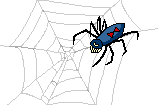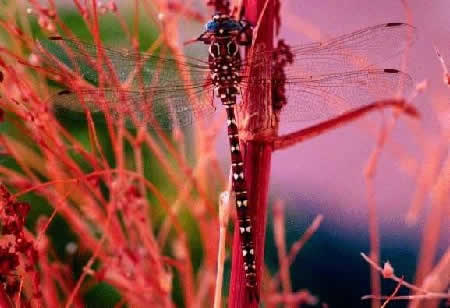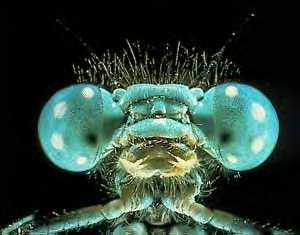|
|
Canku Ota |
|
|
(Many Paths) |
||
|
An Online Newsletter Celebrating Native America |
||
|
March 20, 2004 - Issue 109 |
||
|
|
||
|
White Crow Hides the Animals |
||
|
A Kiowa Legend |
||
|
The people did not know that there was someone who went out and told all the buffalo and deer within reach that the hunters were coming and to hide. here was a man in camp who could turn himself into a white crow. He went out and told all the animals to make their getaway. This person, White Crow, would come back later in the day when on one could see him and turn himself back into a man. The starving people moved their camp in various directions trying to find where the game went. White Crow did not move. Under his lodge was a hole where all the buffalo were. This is where he got his food. When the people returned to one camp, they found this man still living there. He said, "Why did you come back? I have nothing to eat. I have been having just as hard a time as you. I have had nothing to eat since you left." One day, some of the men were playing a game with sticks and White Crow came toward them. The players smelled the odor of buffalo fat coming from the direction where the man was standing. The noticed that the man had on a good-looking buffalo hide, turned inside out to disguise its newness. He also had a sacred stick rubbed with buffalo fat that they could smell. He did not like their looking at him. He slipped away so they could not ask him questions.
When Owl came back, coyote told the men to gather everyone together and announce they were moving camp. Coyote was going to change himself into a little pup and they were to leave him behind. White Crow had a daughter, Coyote told them. "When the people leave she will search the camp for anything left behind and will find me." The
nest day, everyone moved and Coyote turned himself into a dog, but
he forgot to put on the whiskers of a dog. The little girl found
him and brought him to her lodge. When White Crow came in he asked
to examine the dog. He saw that there were no whiskers and he told
his daughter that he was afraid of this. He said it was a person
disguised as a dog. But the girl said she wanted to keep it anyway.
She refused to throw it away. She gave it a piece of meat while
her father went out to warn all the game to be alert.
When White Crow returned to his camp and saw what had happened, he said to the young girl, "See what you have done! I was afraid something like this would happen. Now we are going to have a hard time."
That night, Coyote called the men together and told them he had a plan. They would have to follow his instructions carefully. They were to announce that everyone should move over to a forest a few valleys away. Coyote would turn himself into a bull elk and hide in the brush where White Crow would not see him. When the people came along they were to kill and butcher him, but they were to leave behind his skeleton and his head with the antlers attached. So, the next morning, the people moved to where he had directed them and some of them went out to look for game. A hunter scared up the elk, chased him, and killed him. They butchered him the way they had been told. While they had been chasing him, White Crow had flown over Elk and said, "I wonder how I overlooked you. I should have told you they were hunting and to hide. I am to blame. But you can run fast and save yourself."
"Well, you must be an elk, but I do not see how I overlooked you." White Crow than decided he would pick out the scraps of meat left on the ribs. When he stuck his head in between them, Coyote closed his ribs and held White Crow in a vise. Then he got up and turned himself into a man. "Now, I have got you!" White
Crow said, "Coyote, please turn me loose. I will not do anything
bad again. I will be good to you all. Please, turn me loose!"
The people were watching from a distance and when they saw that
Coyote had White Crow, they Coyote said, "Now I have caught you and I am going to take you to camp and let the people do as they please with you." He took him to the camp and the people said, "This is the one who has caused us a lot of misery and starved us. Now that we have him, what shall we do with him?"
Coyote turned to Spider Old Woman and said, "I am going to tell the people to kill you for letting White Crow get away." Spider Old Woman said, "That White Crow doesn't know what he's talking about. I will get him." She began dragging in White Crow as though she was pulling on a rope. White Crow said. "Hey, I was only joking. I will be good. Have compassion on me." But Spider Old Woman went on pulling him in until she got him in her hands. She gave him to Coyote. "Do whatever you want with him," she said.
Print
and Color Your Own Dragonfly |
|
|

 Out
on the plains there was a camp where the hunters were never successful.
They could not understand this. Every time they went out to hunt,
the game scattered and hid where it could not be killed. This
caused the people to starve.
Out
on the plains there was a camp where the hunters were never successful.
They could not understand this. Every time they went out to hunt,
the game scattered and hid where it could not be killed. This
caused the people to starve.  Coyote
was there in that village. That night he called the men together
and offered to look around White Crow's camp and tell them what
he learned. Coyote watched White Crow's camp for a while, the came
back and told the men he needed two good men with good eyes. Owl
and Dragonfly were the ones chosen. Coyote told them to lie down
in the grass and watch White Crow wherever he went. Dragonfly watched
so hard, his eyes came out. Owl strained his eyes until they became
larger than ordinary eyes. Owl watched the man until he saw him
go down in the ground.
Coyote
was there in that village. That night he called the men together
and offered to look around White Crow's camp and tell them what
he learned. Coyote watched White Crow's camp for a while, the came
back and told the men he needed two good men with good eyes. Owl
and Dragonfly were the ones chosen. Coyote told them to lie down
in the grass and watch White Crow wherever he went. Dragonfly watched
so hard, his eyes came out. Owl strained his eyes until they became
larger than ordinary eyes. Owl watched the man until he saw him
go down in the ground. One
day when the man was gone, the little girl removed the stone that
covered the buffalo hole. She called the puppy over to look into
the hole but he acted as if her were afraid. "Come over here.
Look in here pup, see what we have." When she said this, the
pup came over. Suddenly he jumped into the hole, and turned into
a man and began to holler, "Scatter all over the world! Scatter!
Scatter!" The buffalo came out of the ground like a big river.
Coyote turned himself into a cocklebur and stuck himself on the
fetlock of the last buffalo that go past the girl, who was waiting
for him with a club. After the buffalo got out of White Crow's lodge
and were a long way off Coyote became a man again and shouted "Scatter!
Scatter!"
One
day when the man was gone, the little girl removed the stone that
covered the buffalo hole. She called the puppy over to look into
the hole but he acted as if her were afraid. "Come over here.
Look in here pup, see what we have." When she said this, the
pup came over. Suddenly he jumped into the hole, and turned into
a man and began to holler, "Scatter all over the world! Scatter!
Scatter!" The buffalo came out of the ground like a big river.
Coyote turned himself into a cocklebur and stuck himself on the
fetlock of the last buffalo that go past the girl, who was waiting
for him with a club. After the buffalo got out of White Crow's lodge
and were a long way off Coyote became a man again and shouted "Scatter!
Scatter!" Coyote
returned to his people and they began to enjoy the buffalo again.
This made White Crow angry. He directed the buffalo and the other
animals to hide from the hunters. Soon the people were starving
again. White Crow let them know he was going to make it harder than
before. He flew over the camp saying, "I want you to know it
was me who kept you from killing the buffalo before. You are not
going to kill meat animals any more."
Coyote
returned to his people and they began to enjoy the buffalo again.
This made White Crow angry. He directed the buffalo and the other
animals to hide from the hunters. Soon the people were starving
again. White Crow let them know he was going to make it harder than
before. He flew over the camp saying, "I want you to know it
was me who kept you from killing the buffalo before. You are not
going to kill meat animals any more." After
the hunters left: White Crow found the skeleton. He lit on its antlers
and thought to himself, "I know this is not an elk, I know
what Coyote did before. This is just Coyote, who has disguised himself
again. I will test him and find out." So White Crow stood on
Elk's head and began to strike at Elk's nose with his sharp beak
saying, "I know you are Coyote! I know you are Coyote!"
He kept on striking. He stopped just as Coyote was about to cry
out. "Well, I will try another place." He moved back to
the hind leg, to the kneecap. He struck with his beak. "I know
you are Coyote! I know you are Coyote!" Again, Coyote was just
about to yell when White Crow stopped.
After
the hunters left: White Crow found the skeleton. He lit on its antlers
and thought to himself, "I know this is not an elk, I know
what Coyote did before. This is just Coyote, who has disguised himself
again. I will test him and find out." So White Crow stood on
Elk's head and began to strike at Elk's nose with his sharp beak
saying, "I know you are Coyote! I know you are Coyote!"
He kept on striking. He stopped just as Coyote was about to cry
out. "Well, I will try another place." He moved back to
the hind leg, to the kneecap. He struck with his beak. "I know
you are Coyote! I know you are Coyote!" Again, Coyote was just
about to yell when White Crow stopped. Spider
Old Woman said, "Let me have him. I want to see the one who
has caused us to starve." As she held White Crow, she was entangling
him with her web but no one knew this. As she was doing it, White
Crow got out of her hands and flew up into the air. He circled the
camp, laughing. "This time I will have no compassion on you.
This time I am really going to starve you!"
Spider
Old Woman said, "Let me have him. I want to see the one who
has caused us to starve." As she held White Crow, she was entangling
him with her web but no one knew this. As she was doing it, White
Crow got out of her hands and flew up into the air. He circled the
camp, laughing. "This time I will have no compassion on you.
This time I am really going to starve you!" Coyote
ordered the men to go and get firewood. They built a big fire and
put White Crow in it until he was burned all black. Then Coyote
said, "I am going to make it so you can never do anything your
own way. All your life you are going to be a bird flying about looking
for scraps. You are going to be frightened by everything."
Now, this is the way with Crow.
Coyote
ordered the men to go and get firewood. They built a big fire and
put White Crow in it until he was burned all black. Then Coyote
said, "I am going to make it so you can never do anything your
own way. All your life you are going to be a bird flying about looking
for scraps. You are going to be frightened by everything."
Now, this is the way with Crow. Dragonflies
form an important part of Wetland wildlife and they play a significant
roll in its general ecology. They are among the most beautiful and spectacular
insects flying today and they are also among the most ancient of living
creatures.
Dragonflies
form an important part of Wetland wildlife and they play a significant
roll in its general ecology. They are among the most beautiful and spectacular
insects flying today and they are also among the most ancient of living
creatures.  Odonate
larvae are non-discriminate hunters which will eat any animal as large
as or smaller than themselves, including their own species. Small vertebrates
such as tadpoles and fish fry are not immune from attack. Prey may be
stalked or ambushed. The labium is shot out by a rapid rise in haemolymph
pressure. The prey is held with the hand-like palps and is withdrawn to
be chewed by strong mandibles.
Odonate
larvae are non-discriminate hunters which will eat any animal as large
as or smaller than themselves, including their own species. Small vertebrates
such as tadpoles and fish fry are not immune from attack. Prey may be
stalked or ambushed. The labium is shot out by a rapid rise in haemolymph
pressure. The prey is held with the hand-like palps and is withdrawn to
be chewed by strong mandibles.  Adult
Odonata are visually oriented hunters with exceptional aerobatic ability
and extremely acute eyesight. Many are strong fliers, and to catch them
can be extremely difficult. Males tend to congregate around the breeding
sites where they may be seen either perched on waterside vegetation, hovering
over small territories or hawking up and down in search of females. Females
of many species spend much time away from the water, only appearing to
mate and lay eggs, but some congregate with the males. Most adults are
long-lived. In cold climates some over-winter in sheltered places and
in the dry tropics some aestivate through the dry season. Some undertake
long dispersal flights, including transoceanic journeys, but others remain
tightly associated with their larval habitat.
Adult
Odonata are visually oriented hunters with exceptional aerobatic ability
and extremely acute eyesight. Many are strong fliers, and to catch them
can be extremely difficult. Males tend to congregate around the breeding
sites where they may be seen either perched on waterside vegetation, hovering
over small territories or hawking up and down in search of females. Females
of many species spend much time away from the water, only appearing to
mate and lay eggs, but some congregate with the males. Most adults are
long-lived. In cold climates some over-winter in sheltered places and
in the dry tropics some aestivate through the dry season. Some undertake
long dispersal flights, including transoceanic journeys, but others remain
tightly associated with their larval habitat.